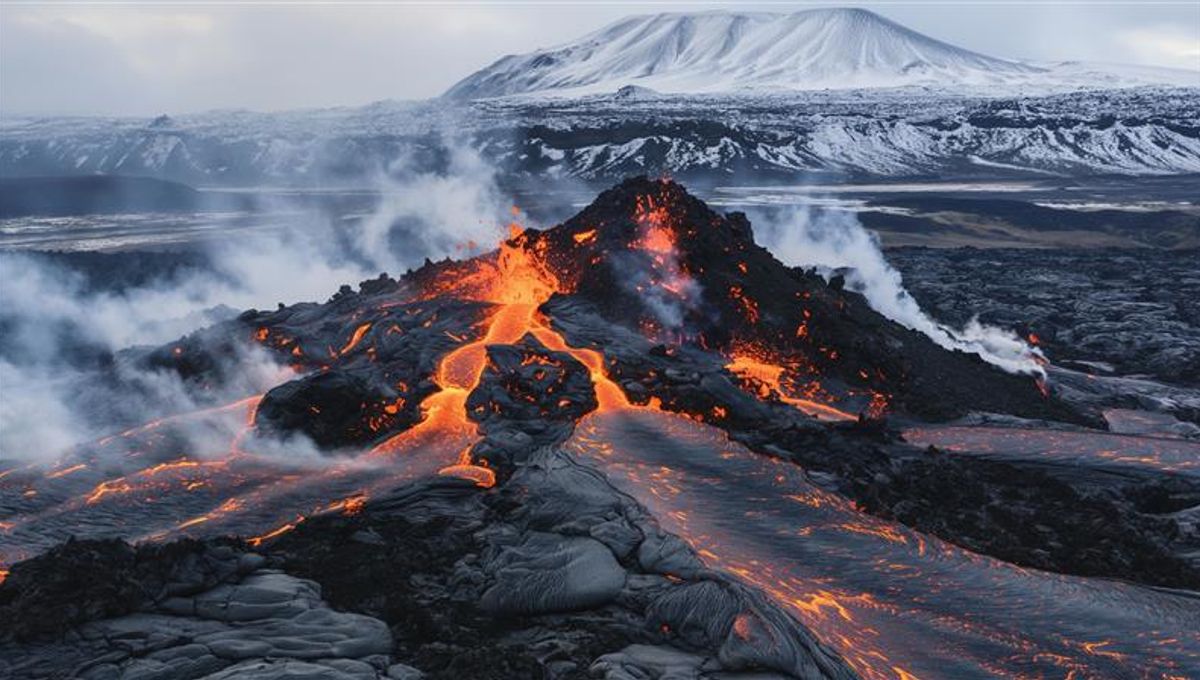
Few natural phenomena catch our attention like volcanic eruptions. There is something staggeringly awe-inspiring about this primordial geological event. However, there is still much we do not know about them, especially when it comes to the behavior of magma before it emerges from the Earth.
In recent years, scientists have turned to so-called “crystal clocks” to understand how long magma is stored underground before an eruption and how long it can take to travel to the surface. However, as a new explanation article by PNAS explains, they are a controversial topic.
Quick boom or stalled storage?
How do volcanoes work? Many of us probably think of volcanoes like some sort of geological pimple – liquid magma builds up deep underground until the pressure forces it to spurt from the top of a mountain. But the reality is more complicated.
As magma rises through the Earth’s crust, it can cause earthquakes, release fumes, and provide other indications that it may be about to erupt. But scientists are uncertain about how the magma rises. One possibility is that it is a direct ascent, much like the magma-pimple concept above, which occurs over a matter of days. The other possibility is that magma rises towards the surface and then pauses, forming pools deep underground. This stalled magma may stay in place for thousands of years before it eventually revives and continues to rise.
In this second case, the magma stalls because enough of it has cooled to temperatures below roughly 720°C (1,328°F), causing it to harden and become effectively stuck. Then, if there is an injection of new hot magma from below, the solidified rock melts and pushes upwards to erupt.
If the first explanation is correct, then a grumble from a sleeping mountain may indicate an imminent eruption. But if the second explanation is correct, then the same grumble may be less concerning.
The tick-tock of the crystal clocks
So how can we clear this up? Well one possible area of research has turned to analyzing crystals that form in volcanic rock from past eruptions.
In 2014 a seminal paper was published that looked at these crystals to infer how magma behaved before it reached the surface. Authors Kari Cooper, University of California, and Adam Kent, Oregon State University, crushed volcanic rocks taken from recent eruptions of Oregon’s Mount Hood. They sifted out crystals, including plagioclase, that formed in the rock as the magma made its way to the surface.
Plagioclase can be used in radiometric dating by measuring how much of the mineral’s uranium has decayed. As plagioclase is tough and cannot remelt, it offers a useful way to measure when magma started to form.
Another type of crystal was also examined that can be used to estimate how long magma has been in a liquid state, the state that erupts more easily. This form of crystal clock includes plagioclase, as well as pyroxene, olivine, and quartz. An examination of the extent of diffusion between the layers of these crystals can provide insights into how long the minerals experienced eruption-level temperatures.
As a result, Cooper and Kent found that the oldest plagioclase crystals in the 2014 samples were at least 20,000 years old, and that they had probably been at high temperatures for hundreds of years. They concluded that the crystals could only have remained at the highest temperatures for around 12 percent of the magma’s whole lifetime, suggesting the magma had been stalled in reservoirs under the volcanoes for 20,000 years.
Cooper and Kent’s work marked a significant breakthrough for volcanologists and has inspired various other studies since then.
Controversy among the clocks
But while it is hoped crystal clocks offer us a way to understand how magma behaves before it erupts, there are those who are more cautious. This resistance comes from the fact that it is extremely difficult to reproduce the types of conditions present deep below the Earth’s surface.
Magma crystals are made up of many microscopic layers that are formed when each new injection of hot magma rises from below to heat the stalled rock. Each layer, so the theory goes, should be chemically unique as it is made from different magmas. Like the rings of a tree, a cross-section of a crystal should have nice distinct lines that demarcate each layer. But this is not the case in reality because, over time, atoms migrate between the layers, making their chemical composition more homogeneous. It also seems that the older crystals have more of this blurring effect.
Researchers can recreate this process in laboratories using a method that measures the rate of atomic diffusion inside crystals while also examining the concentration and depth of uptake. This approach has produced a standardized way to date the speed at which crystals took to form. However, when examining crystal clocks, researchers have reported inconsistent diffusion rates when replicating original studies.
This does not suggest the whole idea of crystal clocks should be thrown away, but it does indicate a need for caution. In particular, they should not be relied on alone, but rather seen as another tool in the broader toolkit.
[H/T: PNAS]
Source Link: Can So-Called “Crystal Clocks” Help Predict Volcanic Eruptions?